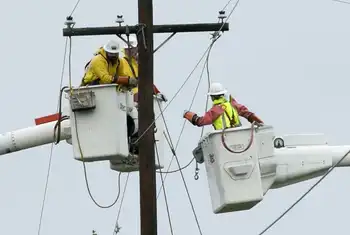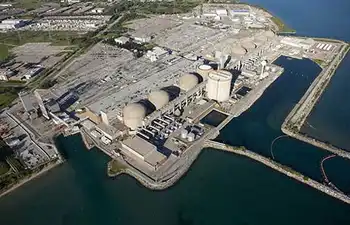US Senate stimulus bill opens nuclear loan-guarantee door
By CNN.Money.com
Electrical Testing & Commissioning of Power Systems
Our customized live online or in‑person group training can be delivered to your staff at your location.

- Live Online
- 12 hours Instructor-led
- Group Training Available
However, the House-passed version doesn't include loan guarantees for nuclear power and Capitol Hill watchers say the provision stands a good chance of being cut in the final legislative process.
Although the legislative language leaves open the types of technology eligible for a government loan guarantee (as long as they substantially reduce greenhouse gases), some environmentalist organizations opposed to nuclear power are concerned that the measure could be used to fund new generation.
Many nuclear-power investors say that, because of construction and liability costs, companies such as Exelon Corp. (EXC) and General Electric Co. (GE) can't build new generation without government guarantees or funding.
The Congressional Budget Office has also said that the risk of default on the loan guarantees, given a raft of legal, procedural and environmental hurdles, exceeds 50%.
Energy economists and analysts say, however, that the country will find it extremely difficult to meet greenhouse-gas reduction goals without a major new fleet of nuclear generation, particularly if environmental regulations and a premium on emitting carbon dioxide curbs new coal-fired power.
The natural gas industry warns that, even with major savings in energy efficiency, reliance on its cleaner-burning fossil fuel will push prices up to levels prohibitive for industries such as manufacturing and chemical sectors.
Even if the measure passes the winnowing process on the Senate floor and as senior lawmakers from both chambers debate the final package, projects would still face approval from the new Secretary of Energy, Stephen Chu. The physics professor-turned-politician has expressed apprehension of investing government funds into nuclear power, preferring research and development of advanced reactor designs and resolving the radioactive-waste issue.
Also, some of the legislators likely to play a key role in advising negotiators on the final recovery bill package are staunch opponents of nuclear power. Rep. Henry Waxman, D-Calif., and Rep. Ed Markey, D-Mass., have said they would be opposed to new nuclear loan guarantees. Both lawmakers were central in drafting the House-passed energy portions, which didn't include provisions for nuclear.
"The disparity will be resolved in conference committee after each house passes its own legislative language," environmental organization Friends of the Earth said in an email.
Under current law, the U.S. Department of Energy has the ability to guarantee around $18.5 billion in loans for new nuclear generation, but the industry said the total amount for applications for current projects on the books would total more than $100 billion.











